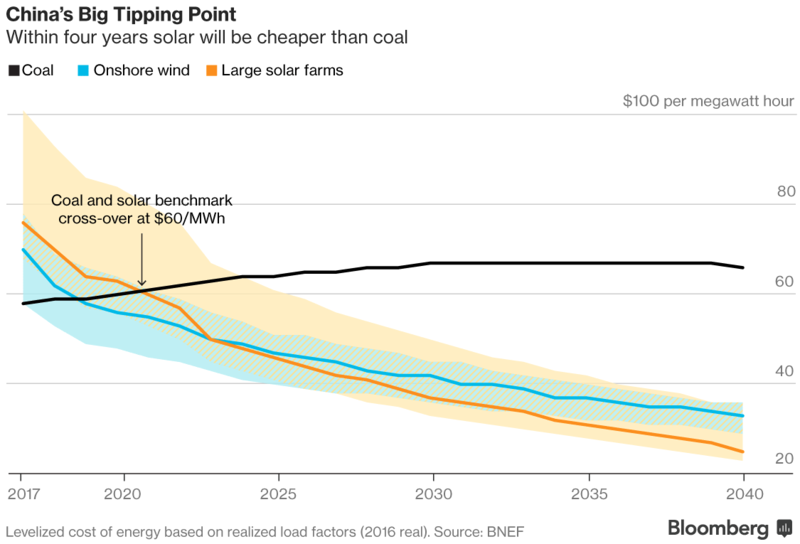Coal Production May Cost Three Times More Than Solar Energy By 2040
Energy production from coal-fired power plants is on the way out quicker than experts thought. A Bloomberg report details how solar and wind production will be cheaper by 2021, and that it could cost just a third of coal production by 2040.
Updated May 24 2019, 8:12 a.m. ET
Coal has been well-documented to be on the way out as a main source of energy production. Many countries are moving toward natural gas and renewable energy, and that’s only going to increase as costs to use these alternative sources go down. A report suggests that solar energy will not only be cheaper to build than coal-fired power plants, but even cheaper than natural gas, and it’s all happening sooner than experts predicted.
Bloomberg New Energy Finance believes that the crossover will happen four years from now in 2021 when solar becomes cheaper than coal in the markets of China and India. At the moment, coal is hovering at $60 per megawatt hour while solar and onshore wind farms are still well above that. It could only take a year or so for wind farms to become cheaper, then solar will likely follow.
According to their research, coal costs will actually increase until it levels off in 2030, a time when many countries have set a goal to become fueled solely by renewable energy. While that will hit above $60 per megawatt hour, both wind and solar farms will be at $40 or below. Solar is expected to be even cheaper than wind by 2023.
Despite a push to bring back coal opportunities in the United States, it’s simply not going to be feasible. Bloomberg’s report further goes on to show how solar production costs will decrease 30 percent by 2022 and 67 percent by 2040 in the United States alone. 11 different regions around the world will see at least a 50 percent decrease by 2040. Japan expects the biggest downgrade at 85 percent, France will see a cut by 64 percent, and Canada will see a similar cut at 63 percent.
While it’s a scary situation to see the coal industry being impacted like this, keep in mind that there are investments going into other sources that will also be creating more jobs. China and India will account for nearly 40 percent of that worldwide investment. Nearly $240 billion will be put toward battery storage to make renewable energy more efficient and to use that excess energy.
Natural gas is becoming a transitioning resource that will have 16 percent more generation capacity by 2040, according to the Bloomberg report. Both this and battery storage will provide energy when solar and wind aren’t meeting requirements. However, as all of this technology gets cheaper, it’s only a matter of time before natural gas gets looked past. That’s where the debate currently lies on what countries like the United States should do as the natural gas industry increases.
For now, it’s clear that coal-powered generation will become a rarity by 2040. Investopedia reports that, “United States [production] is estimated to be slashed in half” while there will be “an 87 percent drop in Europe,” and approximately “369 gigawatts of coal projects stand to be canceled.”

